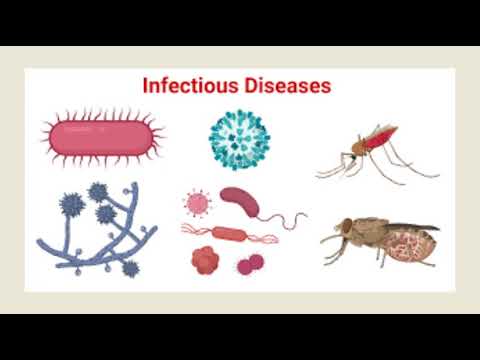アメリカ人にとって最も危険な5つの健康問題
for Americans. The five most dangerous health problems for Americans. One chronic diseases, heart disease, leading cause of death in the US includes conditions like coronary artery disease, heart attack and congestive heart failure. Risk factors high blood pressure, high cholesterol, smoking, obesity, poor diet, sedentary lifestyle, and genetic predisposition. Prevention, healthy diet, regular exercise, avoiding smoking, and managing stress. Diabetes affects over 37 million Americans. Type one and type two. Type two diabetes strongly linked to obesity and physical inactivity. Complications kidney disease, vision loss, nerve damage and cardiovascular disease. prevention, management, weight control, balanced diet, regular physical activity and medication. Cancer most common types, lung, breast, prostate and colorctyl cancers. Risk factors smoking, lung cancer, alcohol consumption, poor diet, UV exposure, skin cancer and genetic predisposition screening, mamograms, colonoscopies and other screenings help with early detection, treatment, surgery, chemotherapy, radiation. immunotherapy and targeted therapies. Chronic respiratory diseases COPD often caused by smoking or long-term exposure to pollutants. Asthma affects over 25 million Americans. Triggers include allergens, air pollution, and exercise. prevention, avoiding smoking, reducing exposure to air pollutants, and using prescribed medications. Two, obesity and related condition statistics. Over 42% of adults and 20% of children are obese. contributes to type 2 diabetes, hypertension, heart disease, and certain cancers. Causes: high calorie diets, sedentary lifestyles, genetic predisposition, and socioeconomic factors. prevention, balanced diet, physical activity, education on nutrition, and community programs promoting active lifestyles. Three, mental health disorders, depression and anxiety. Most common disorders affecting millions. Risk factors include trauma, genetics, and chronic stress, PTSD, common among veterans, trauma survivors, and first responders. Bipolar disorder, characterized by mood swings ranging from depression to mania. Suicide, 10th leading cause of death. Rates are higher among teens. young adults and certain minority groups. Treatment, therapy, medication, eg. anti-dopressants, community support and crisis hotlines, eg 988, suicide and crisis lifeline. Four substance use disorders opioid crisis causes over prescription of painkillers. Illicit drug use, eg. Fentinyl, heroin. Impact over 100,000 overdose deaths annually. Response: Naran, Nlloxxone for overdose reversal, public health campaigns and treatment programs. Alcohol use, excessive consumption leads to liver disease, cancers and accidents. Binge drinking is particularly problematic among young adults. Tobacco and vaping, smoking, still the leading preventable cause of death, contributing to cancer, heart disease, and COPD. Vaping linked to lung injuries and nicotine addiction among teens. Five infectious diseases, seasonal influenza. Annual outbreaks lead to hospitalizations and deaths especially in older adults. Vaccination most effective prevention measure. Coid9 continued risk of new varants and long co prevention vaccination masks and public health measures. Antibiotic resistance overuse of antibiotics has led to superbugs resistant to treatment. Example methasylin resistant stafyla caucus orureius MRSA. Regional diseases Lyme disease. Tick born disease common in the northeast and Midwest. West Nile virus. Mosquitoborn disease in warmer regions. The five most dangerous health problems for Americans. The five most dangerous health problems for Americans. The five most dangerous health problems for Americans. One, chronic diseases, heart disease, leading cause of death in the US includes conditions like coronary artery disease, heart attack, and congestive heart failure. Risk factors high blood pressure, high cholesterol, smoking, obesity, poor diet, sedentary lifestyle, and genetic predisposition. Prevention: Healthy diet, regular exercise, avoiding smoking, and managing stress. Diabetes affects over 37 million Americans. Type 1 and type two. Type 2 diabetes strongly linked to obesity and physical inactivity. Complications kidney disease, vision loss, nerve damage and cardiovascular disease, prevention, management, weight control, balanced diet, regular physical activity and medication. Cancer most common types lung, breast, prostate and colorctyl cancers. Risk factors smoking, lung cancer, alcohol consumption, poor diet, UV exposure, skin cancer, and genetic predisposition screening. Mamograms, colonoscopies, and other screenings help with early detection, treatment, surgery, chemotherapy, radiation, immunotherapy, and targeted therapies. Chronic respiratory diseases, COPD, often caused by smoking or long-term exposure to pollutants. Asthma affects over 25 million Americans. Triggers include allergens, air pollution, and exercise. Prevention, avoiding smoking, reducing exposure to air pollutants, and using prescribed medications.
The five most dangerous health problems for Americans.
1. Chronic Diseases
Heart Disease
Leading cause of death in the U.S.
Includes conditions like coronary artery disease, heart attack, and congestive heart failure.
Risk factors: High blood pressure, high cholesterol, smoking, obesity, poor diet, sedentary lifestyle, and genetic predisposition.
Prevention: Healthy diet, regular exercise, avoiding smoking, and managing stress.
Diabetes
Affects over 37 million Americans (Type 1 and Type 2).
Type 2 Diabetes: Strongly linked to obesity and physical inactivity.
Complications: Kidney disease, vision loss, nerve damage, and cardiovascular disease.
Prevention/Management: Weight control, balanced diet, regular physical activity, and medication.
Cancer
Most common types: Lung, breast, prostate, and colorectal cancers.
Risk factors: Smoking (lung cancer), alcohol consumption, poor diet, UV exposure (skin cancer), and genetic predisposition.
Screening: Mammograms, colonoscopies, and other screenings help with early detection.
Treatment: Surgery, chemotherapy, radiation, immunotherapy, and targeted therapies.
Chronic Respiratory Diseases
COPD: Often caused by smoking or long-term exposure to pollutants.
Asthma: Affects over 25 million Americans; triggers include allergens, air pollution, and exercise.
Prevention: Avoiding smoking, reducing exposure to air pollutants, and using prescribed medications.
2. Obesity and Related Conditions
Statistics: Over 42% of adults and 20% of children are obese.
Contributes to: Type 2 diabetes, hypertension, heart disease, and certain cancers.
Causes: High-calorie diets, sedentary lifestyles, genetic predisposition, and socio-economic factors.
Prevention: Balanced diet, physical activity, education on nutrition, and community programs promoting active lifestyles.
3. Mental Health Disorders
Depression and Anxiety: Most common disorders, affecting millions. Risk factors include trauma, genetics, and chronic stress.
PTSD: Common among veterans, trauma survivors, and first responders.
Bipolar Disorder: Characterized by mood swings ranging from depression to mania.
Suicide: 10th leading cause of death; rates are higher among teens, young adults, and certain minority groups.
Treatment: Therapy, medication (e.g., antidepressants), community support, and crisis hotlines (e.g., 988 Suicide & Crisis Lifeline).
4. Substance Use Disorders
Opioid Crisis
Causes: Over-prescription of painkillers, illicit drug use (e.g., fentanyl, heroin).
Impact: Over 100,000 overdose deaths annually.
Response: Narcan (naloxone) for overdose reversal, public health campaigns, and treatment programs.
Alcohol Use
Excessive consumption leads to liver disease, cancers, and accidents.
Binge drinking is particularly problematic among young adults.
Tobacco and Vaping
Smoking: Still the leading preventable cause of death, contributing to cancer, heart disease, and COPD.
Vaping: Linked to lung injuries and nicotine addiction among teens.
5. Infectious Diseases
Seasonal Influenza
Annual outbreaks lead to hospitalizations and deaths, especially in older adults.
Vaccination: Most effective prevention measure.
COVID-19
Continued risk of new variants and long COVID.
Prevention: Vaccination, masks, and public health measures.
Antibiotic Resistance
Overuse of antibiotics has led to “superbugs” resistant to treatment.
Example: Methicillin-resistant Staphylococcus aureus (MRSA).
Regional Diseases
Lyme Disease: Tick-borne disease common in the Northeast and Midwest.
West Nile Virus: Mosquito-borne disease in warmer regions.


2 Comments
such valuable information